Whole Smoked Chicken: Cooking Temps and Doneness Secrets for Success
Smoking a whole chicken: oh, sure, we all thought about it, but only we had the guts to do it! Wait, that’s not true. No, people everywhere love smoking whole chicken. And why wouldn’t they? A smoked chicken makes a fine meal for your family, and if you have room in your smoker, making more chickens is almost as easy as making only one. Boom. Dinner party.
But if you’re going to smoke a whole chicken, you want it to come out tasty, juicy, and tender—properly cooked throughout—not dry, tough, or flavorless. And for that we need, you guessed it, temperature control! Here we’ll give you the thermal tips you need for perfect whole smoked chicken. Make one for your family tonight, or make a couple for a fun dinner party next week—either way, you’ll love how it cooks up when you take temperature into account. Let’s get down to it.
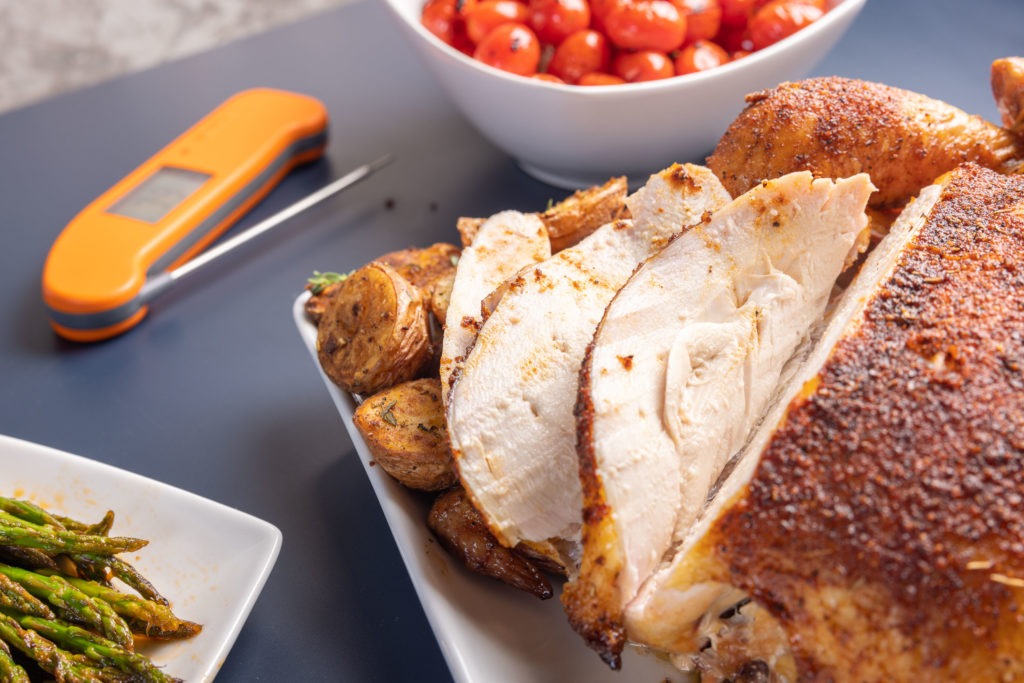
Smoked chicken difficulties and solutions
Smoked chicken is manifestly tasty. I mean, it’s chicken, so it has that going for it already, but then you add the delicious flavor of smoke and you end up with something even better than before. But not all smoked chickens live up to their potential.
A chicken that is left in the smoker to cook until “the legs wobble” or “the juices run clear” will almost certainly be dry. And we all know that smoked chicken skin is not the greatest culinary delight known to man. It can be rubbery and flabby, not words that describe how I want my food to feel.
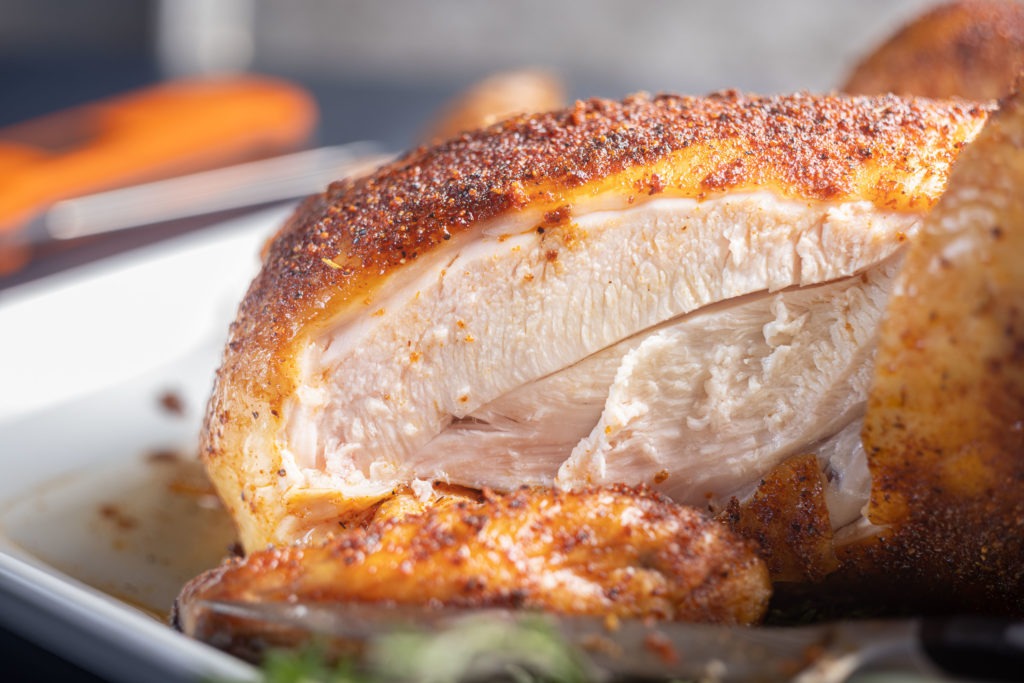
Luckily, there are solutions to both problems, and temperature is a big part of those solutions.
For juicy meat that isn’t dried out, we need need to actually monitor the temperature as we cook. Using a leave-in probe thermometer like Smoke X2™ allows you to see the internal temperature of your bird as it changes, and the alarms let you know when it’s time to act to prevent the meat from drying out. Of course, you still need to verify that temperature with an instant-read thermometer—Thermapen® ONE being the best bet. (I rarely hit the thermal center correctly with my probe, and I cook a lot of birds.)
The rubbery skin has a two-part solution. First, dry-brining helps a lot. Seasoning your chicken 4–12 hours before you cook it and allowing the seasoning to pull water out of the skin will help the skin cook more crisply. The other prong is a two-stage cook. Cooking the meat gently to impart smoke flavor and then turning up the heat to render and crisp the skin is the way to go.
Smoker temps for smoked chicken
If the secret to juicy chicken is temperature-based, and the secret to non-flabby skin is also temperature based, then we should talk about some temperatures, shouldn’t we? First, we need smoke to get into our chicken, so we need to cook at a smoking temperature. Cook your chicken at 225–250°F (107–121°C) for an hour to imbue the meat with smoky goodness.
The slow smoking not only gives us flavor, but it also cooks the meat quite gently for that first hour. Once that’s done, though, it’s time to crank up the heat. Using Billows™ BBQ Control Fan to control your temperatures really comes in handy here, because you can simply change your fan-control temperature and get up to your new temp easily and without lots of fussing with vents, etc. You’re aiming for 350–375°F (177–191°C). At those high temps, your chicken skin stands a chance of crisping, and that’s what we want!
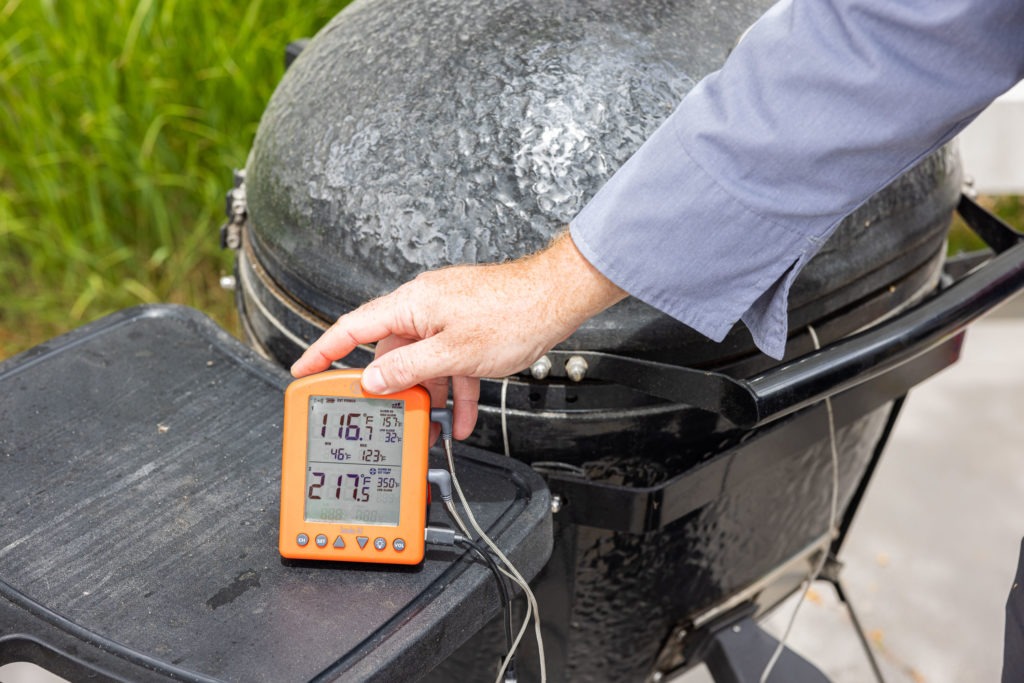
Doneness temps for smoked chicken
Chicken breast meat dries out super easily, so we want to be careful to not overcook it. When you probe the chicken, set the high-temp alarm in the breast for 157°F (69°C). Yes, that is a safe temperature! Not only will there be carryover, but even without it, chicken is safe at that temperature after only a few extra seconds. (Read more about chicken doneness temperatures.) The lower pull temp will help ensure much, much juicier meat.
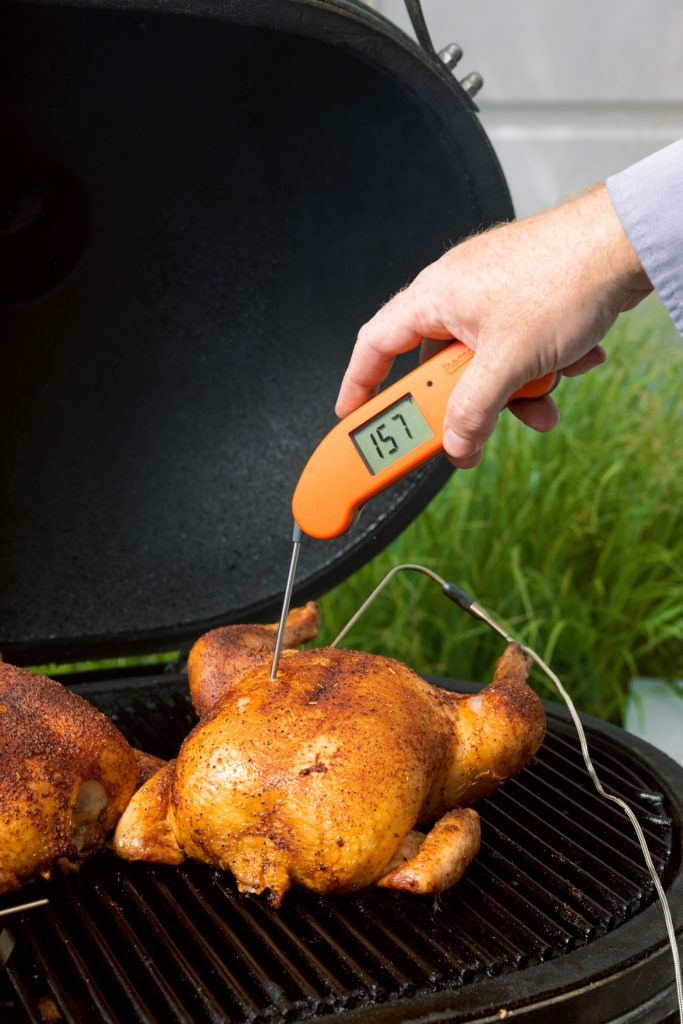
This is a simple, wonderful cook that I hope you add to your regular rotation. There are no bells or whistles, it’s just a good, properly cooked chicken, and that’s all it needs to be. Get those temperatures right, use the two-stage cook to improve the skin texture, and you’ll have something you’ll be proud to serve to guests, or delighted to eat yourself.
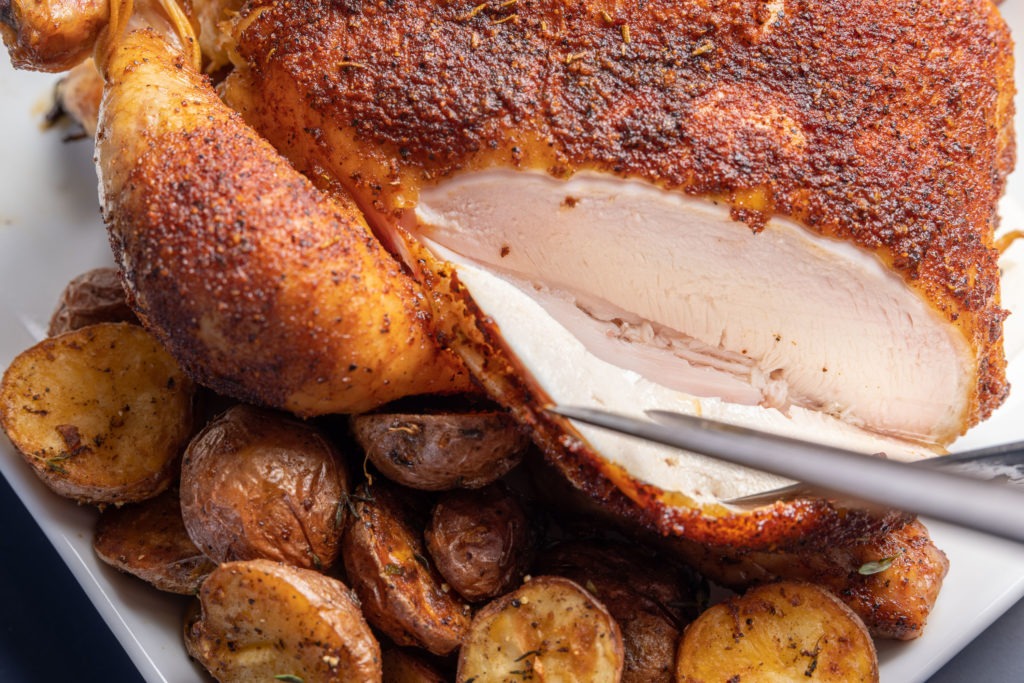
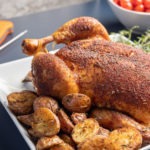
Whole Smoked Chicken Recipe
Description
Whole smoked chicken, following the method presented by Vindulge.com
Ingredients
- 1 whole chicken, 4-5 lb
- 3–4 Tbsp olive oil
- 3–4 Tbsp poultry rub or BBQ rub of your choice (if your rub isn’t salted, supplement with kosher salt)
- 1 small onion, quartered
- 1 head garlic, halved
- 3 sprigs fresh thyme
Instructions
- Pre-heat your smoker to between 225 and 250°F (107 and 121°C). Use whatever wood you like for smoke. We used Billows BBQ Control Fan and Smoke X2 to set our temperature just where we wanted it and decided on 240°F (116°C).
- Pat your chicken dry. Rub it all over with olive oil and season it liberally both outside and inside with the rub. (Do this step 4–12 hours in advance if you have time.)
- Put the thyme, fresh garlic, and quartered onion in the cavity of the bird. Truss the bird’s legs if you like, but we found it mostly helped with how the bird looks, not how it cooks.
- Place the chicken on the rack of your smoker. Insert a probe into the deepest part of the chicken breast and set the high-temp alarm for that probe channel to 157°F (69°C).
- Close your smoker and smoke the chicken for 1 hour (use a timer like TimeStick® to keep track of the time).
- When the time expires, increase the heat of your smoker to 375°F (191°C). If using Billows, simply turn the target temperature up on your connected Smoke X2.
- Continue to cook the chicken until its high-temp alarm sounds. Verify the internal temperature with your Thermapen ONE. We found a spot in the breast that was at least 12°F colder than our target, so we moved the probe to the cold spot and kept cooking.
- If you find no temperature lower than 157°F (69°C), remove the chicken from the smoker and allow it to rest for 10–15 minutes before carving and serving.
- Plate and serve with whatever sides you like. Enjoy!
For more on smoked chicken, see this post on smoke-roasted chicken with a lemon-breadcrumb stuffing.
Shop now for products used in this post:


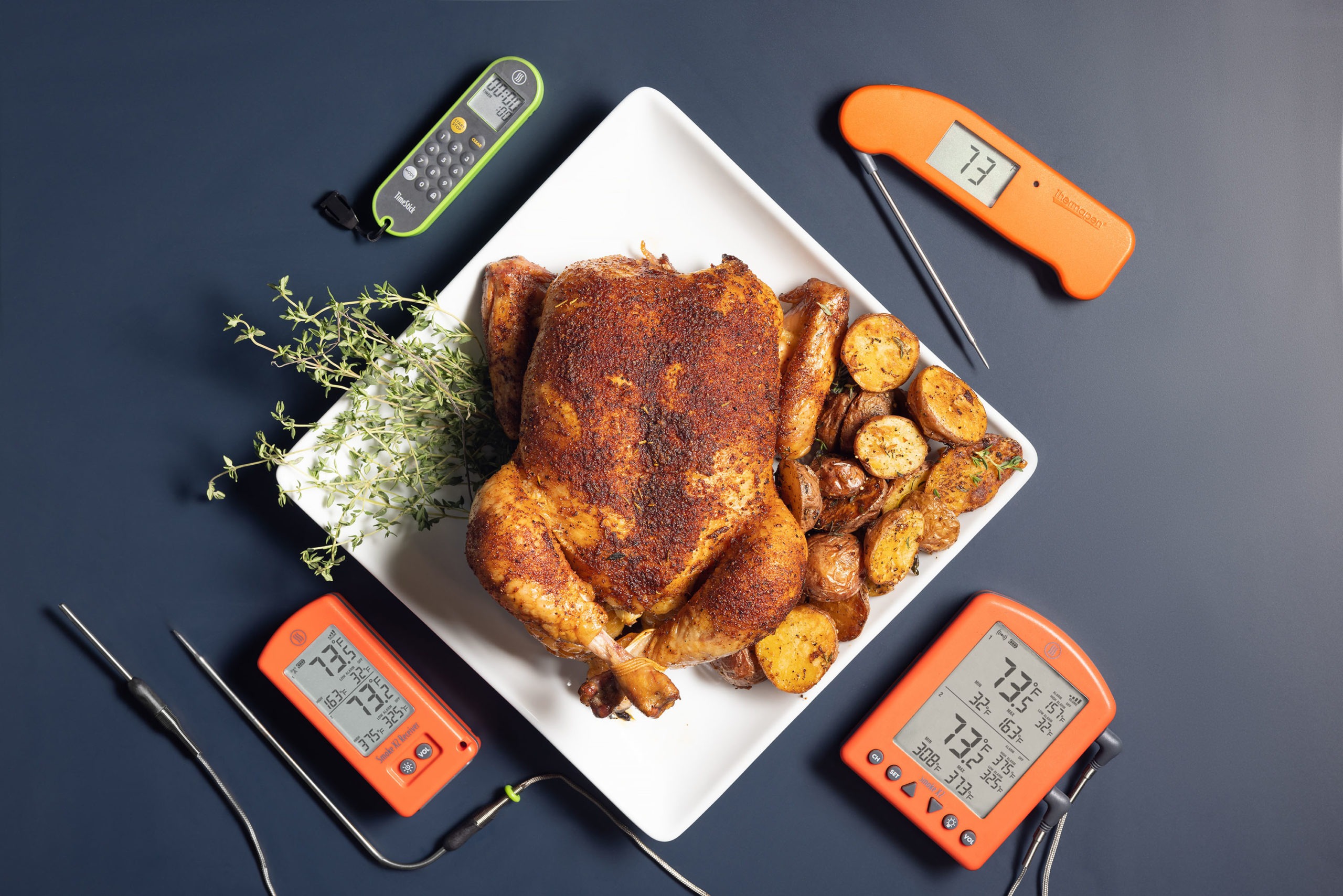
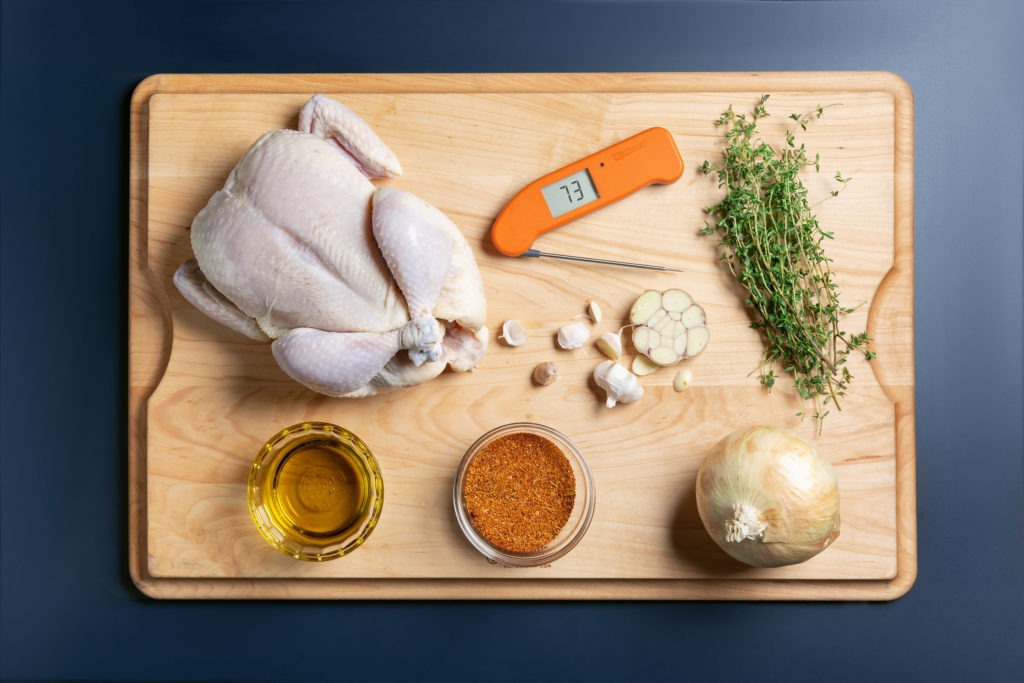
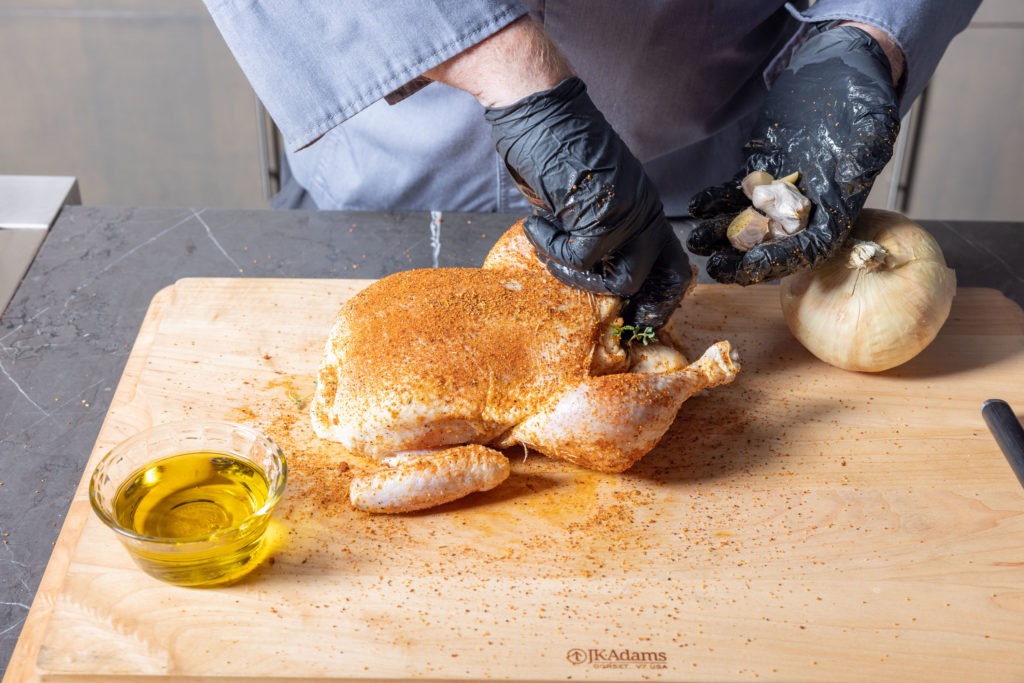
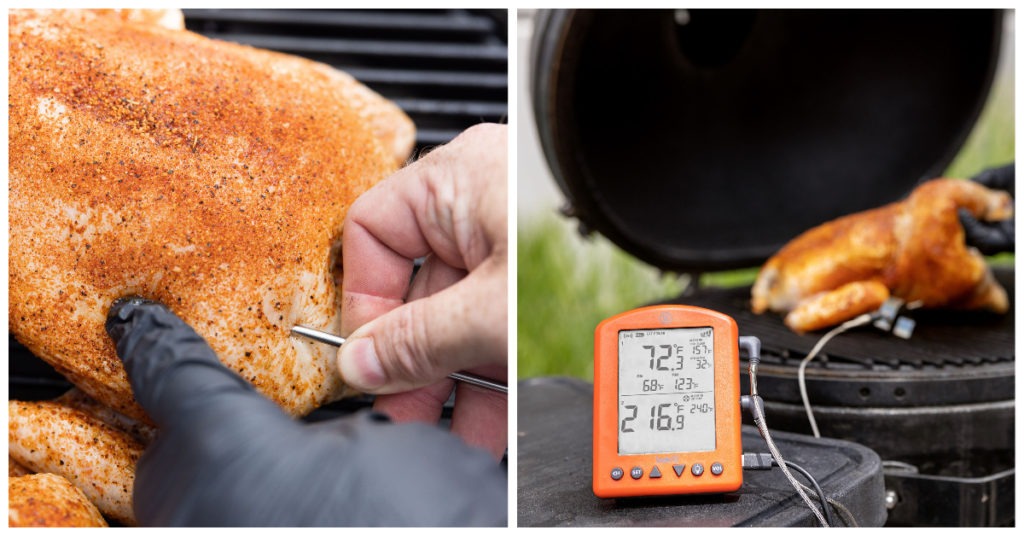
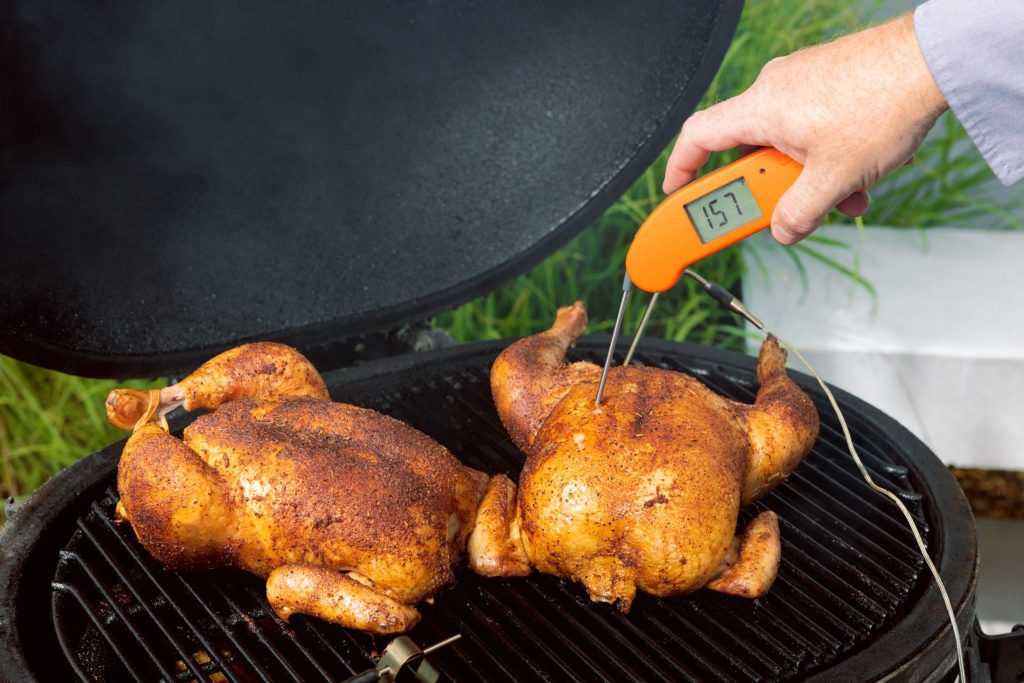
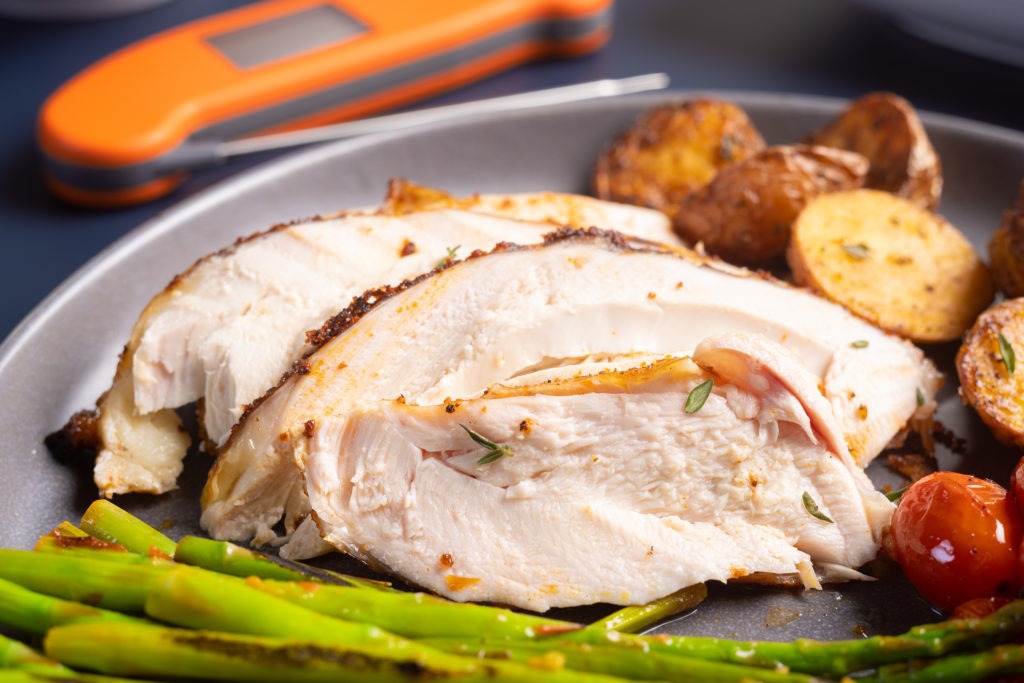


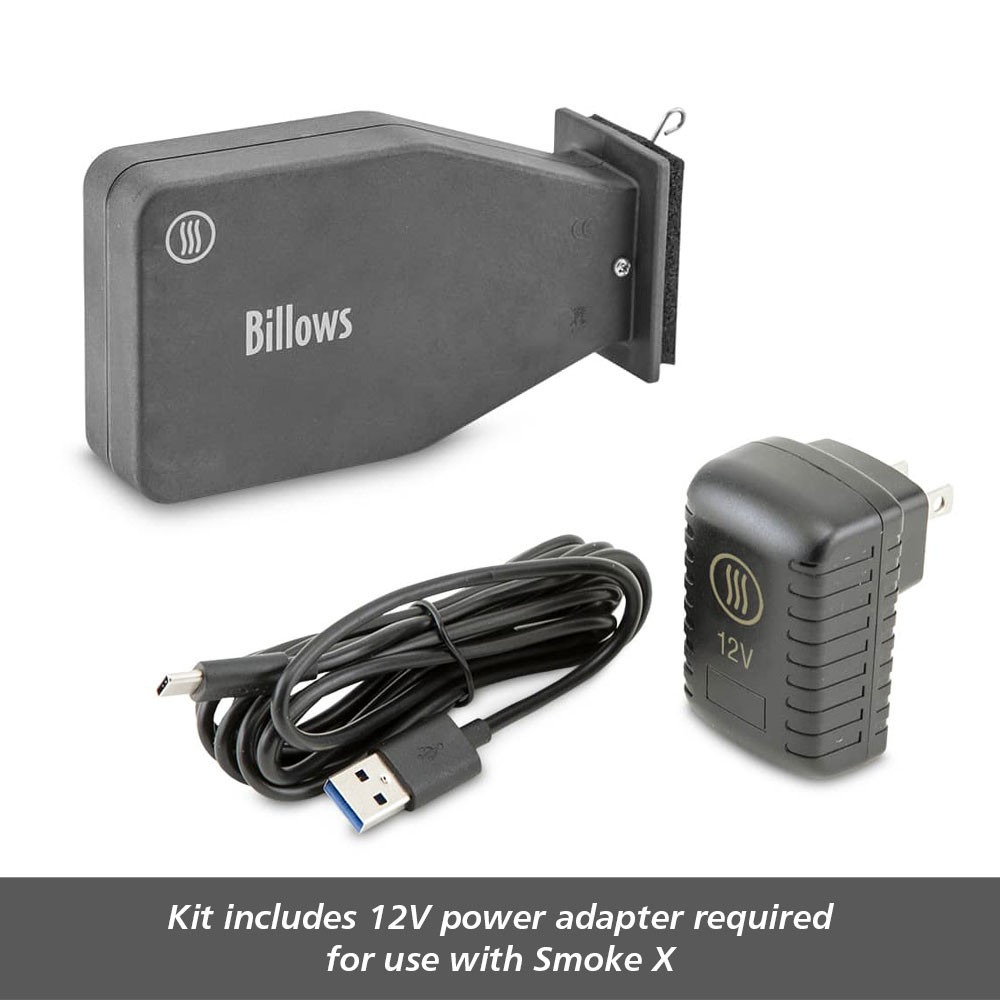
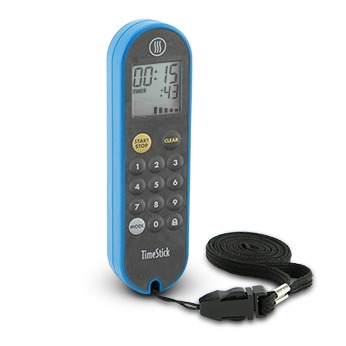
No mention of leg/thigh temps and how to achieve them without drying out the breasts? I thought that a 10-15 degree temp difference existed for doneness.
I am a relative newby to properly cooking meat so please don’t attack if I have overlooked something obvious. Thanks.
You are right! Legs should be cooked about 15°F higher. You can get that by letting the chicken sit on the counter for a while before cooking with a bag of ice placed on the breast. The thighs will warm while the ice keeps the breasts cold. Of, you can skip the trussing. With the legs hanging out in space, they experience the heat more easily and get to a higher temp more quickly. We found that our un-trussed chicken had legs and thigh temps in the 170’s, which is just right.
How would this technique work for smoking a turkey? Low and slow smoke followed by 350 degrees finish? Any idea how long to smoke before turning the heat up?
I would work, but will certainly work better if you spatchcock the turkey! I’d still go with the hour (maybe increase it to half an hour), as the purpose of the low-heat cook is to give the bird smoke flavor. If you spatchcock, you could still go all the way up to 375°F for the second cook.
Tried this 5.90 lbs bird on my GMG. Had a technical issue and didn’t get the bird out until it reached 161F. After resting for 15 minutes I carved a large portion of a breast for the wife, she loved it. Best chicken I have made so far on the smoker. Great job.
Chicken outside crispy and really moist! Love it!
For planning purposes, what is the target time range for the second part of the cook? I know the actual time will vary with the weight of the chicken, but I am just looking for a ballpark so I can plan sides and the rest of the meal.
It’s been a minute since we actually did that cook, but I recall it’s not going to be any more than another hour. Plan on 30 minutes?
Excellent post, Martin! While discussing the relevance of temperature in smoked chicken, it is critical to understand how to utilize a digital food thermometer. Insert the thermometer, for example, into the thickest portion of the chicken breast, taking care not to contact any bones, as it will mess off the temperature reading. Smoke at 225°F till it reaches an internal temperature of 165°F. If the temperature reaches 165°F or above, the smoked chicken is thoroughly cooked and safe to consume.
One alternative method I frequently use to get crispy skin is a “quick fry”. Let the bird rest (after hitting internal targets), and then fry it. I simply have a large roasting pan ready on the bbq with a half-inch of hot oil and throw the whole chicken in for a minute or two. I only cook chicken spatchcocked so it’s easy to move and to get surface area coverage in the oil. You could do it by pieces too.
Sorry! Just learning and never done a whole chicken before. Do you ever put it in an aluminum pan or wrap it while smoking it?
You can, but you want to let plenty of smoke get on it first. I never do.